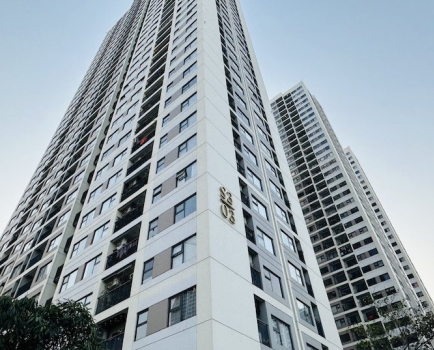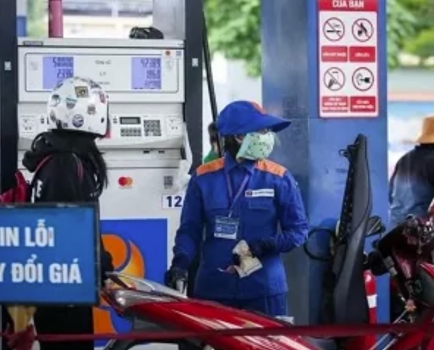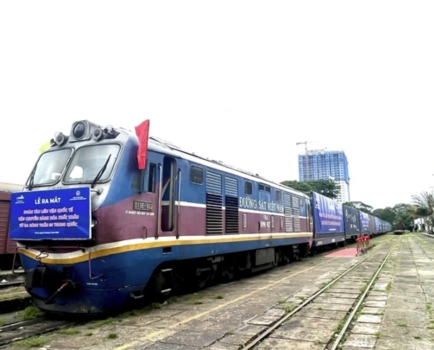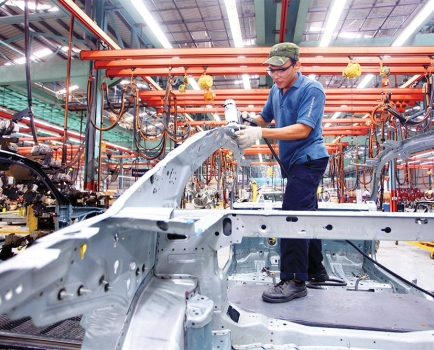Commercialization sucking the soul from ancient town
Fri, 01 Nov 2019 14:03:00 | Print | Email Share:
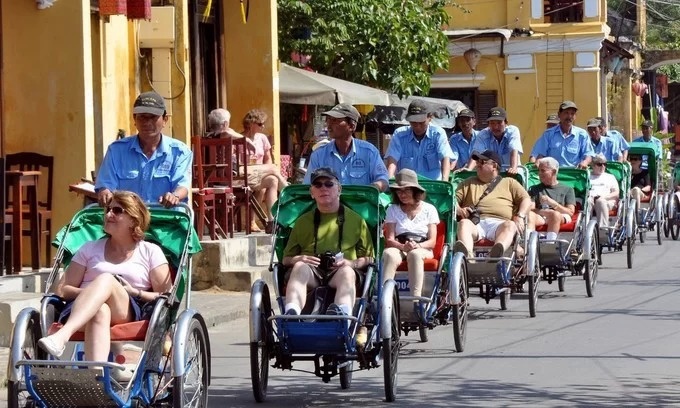
Photo acquired by VnExpress.
Old traditional houses changing hands amid a tourism frenzy, hyper commercialization and increasing migration are threatening Hoi An’s way of life.
Every night thousands of tourists flock to the UNESCO world heritage town in the central province of Quang Nam.
The tranquility that was for many people the quintessence of the old seaport is being increasingly lost to gross and noisy commercialization and the lights from countless lanterns hung in front of virtually every shop and restaurant.
Indeed, ever since 1999, when Hoi An and the My Son Sanctuary in Quang Nam Province were recognized by UNESCO, tourism has grown at a dizzying pace, creating undue pressure, especially on Hoi An.
For the past two decades Hoi An’s tourism has been growing at 15-20 percent a year. Between 2013 and 2018 the number of visitors to the city tripled.
In recent years the closely related sectors of services and tourism have accounted for over 70 percent of its economy.
Every day hundreds of tourist buses queue up illegally, blocking many streets near the downtown area and the interesting views the town has to offer.
"We have no choice but to park illegally, because the downtown parking lots don’t have enough room, and we don’t want our passengers to walk long distances," a bus driver said.
Though tourism has helped create jobs, boosted incomes and fetched the city awards such as the "Asia’s Leading Cultural City Destination" at this year’s World Travel Awards, many people are now worried that if Hoi An continues to grow unchecked, it will fall victim to its own growth.
According to Vo Phung, former director of the Center for Culture and Sports of Hoi An City, the city is the fastest growing in Vietnam in terms of number of tourists, both Vietnamese and international, and expects seven million this year.
Phung told local media that with such large numbers of visitors coupled with temporary non-resident workers, the downtown area is now too crowded.
Hoi An is developing too fast, and is like a bicycle without brakes, he said. "Hoi An needs to rethink its development. Instead of developing in an unplanned manner and emphasizing quantity, it should focus on quality."
Nguyen Chi Trung, former director of the Hoi An Center for Monuments Management and Preservation, said besides putting great pressure on everything in the city from traffic to living space to the environment, the teeming crowds could also prevent tourists from enjoying the architectural beauty of the ancient town. "Sometimes all they see is the back of each other."
Old houses change hands
One of the most worrisome signs of tourism-driven commercialization in Hoi An is the increasing number of old houses being sold or rented out to be turned into shops, destroying their original architecture and reflection of a traditional way of living and worshipping.
Various accounts say between 200 and 300 of the 1,069 old houses in the downtown area have been sold or rented out to businesses.
According to the Hoi An Center for Monuments Management and Preservation, in the last 10 years the number of old houses sold doubled from the previous decade. Some houses have even changed hands multiple times.
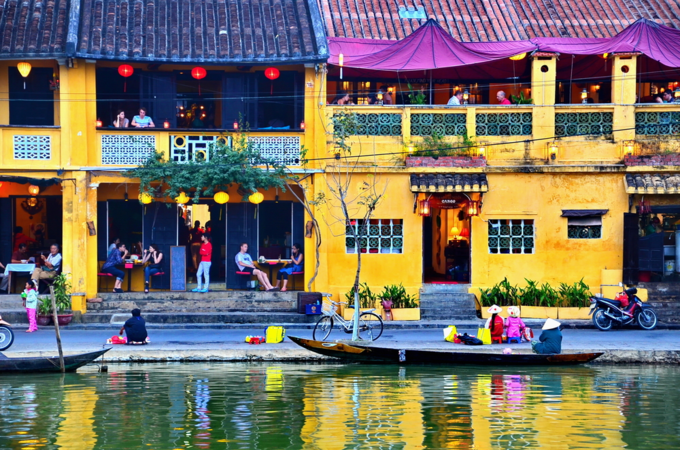
Hoi An by the river. Photo by Shutterstock/iamtripper.
An old house in Hoi An Ancient Town is a sought-after item and can fetch several billion to tens of billions of dong ($1 = VND23,200).
Vo Hong Viet, an official at the management and preservation center, said in the near future more old houses would be sold, considerably impacting the downtown area.
Many families native to the ancient town and living there for generations have left, taking with them a venerable old way of living, leaving behind an overcrowded place always at risk of fires and explosions caused by human hyperactivity.
Yet, those who leave may have practical reasons for doing so. For instance, a family might have grown too big and has to move to the suburbs to afford a bigger place.
"We’re glad that more and more tourists are visiting Hoi An, but we’re also worried that the soul of the ancient town is gradually ebbing away," Nguyen Van Son, vice chairman of the city People’s Committee, told local media.
A recent study of Zone I in the downtown area by the management and preservation center found that out of 600 old houses there, 155 are being used for commercial purposes, with living and worshipping space shrinking to make room for merchandise displays.
Confronting inevitable change
Many new inhabitants of Hoi An are migrants without a deep sense of connection with it, and this is also causing concern that the city is losing its sense of community.
Neighborhood meetings might have no participants because local officials do not know who to invite and where to send the invitations since those registered locally might have moved out of town.
Vuong Long Dong, a Hoi An native, finds many habits and customs and even human relationships in the city are fading as old inhabitants move out and new ones arrive.
Local life is no longer bound by solidarity and mutual support. "If this continues, someday, Hoi An will no longer be itself," Dong said.
But Trung has said in various interviews that it is not all doom and gloom since immigration promises to rejuvenate Hoi An’s once rich multi-cultural diversity.
Four or five centuries ago Hoi An was a bustling port where people from northern Vietnam, China and Japan came to trade and mingle.
Rulers treated immigrants just like natives, providing them with place to trade and do business, creating the cultural diversity that has given Hoi An its heritage.
Hoi An is now only reliving that history and experiencing what is ultimately inevitable change, Trung said.
The solution is thus to calmly cope with things by regulating sensibly, he said.
Phung too said the question is not how to prevent commerce and change, but how to create community rules to bind old and new residents.
There are still some natives living in the downtown area, and so local authorities should consult them to develop a community protocol, he said.
For instance, this protocol might require business owners to preserve traditional worshipping spaces in old houses and everyday cultural activities.
Phung said in the long term the government might also need to consider buying or renting old houses that are categorized as special heritage sites to preserve them.
Hoi An once planned to buy some old houses, but had to abandon the idea since prices were prohibitive.
Son said to preserve Hoi An there are policies designed to help locals keep their old houses and strict regulations about preserving public spaces in the downtown area amid business and commercial activities.
"We are urging people wherever they come from to treat Hoi An as their second home. If you want to do business here for a long time, you have to contribute to the preservation of its heritage."
By: Linh Do/Vnexpress
Source: https://e.vnexpress.net/news/life/trend/commercialization-sucking-the-soul-from-ancient-town-4003362.html
---------------------------------------------
Same category News :




